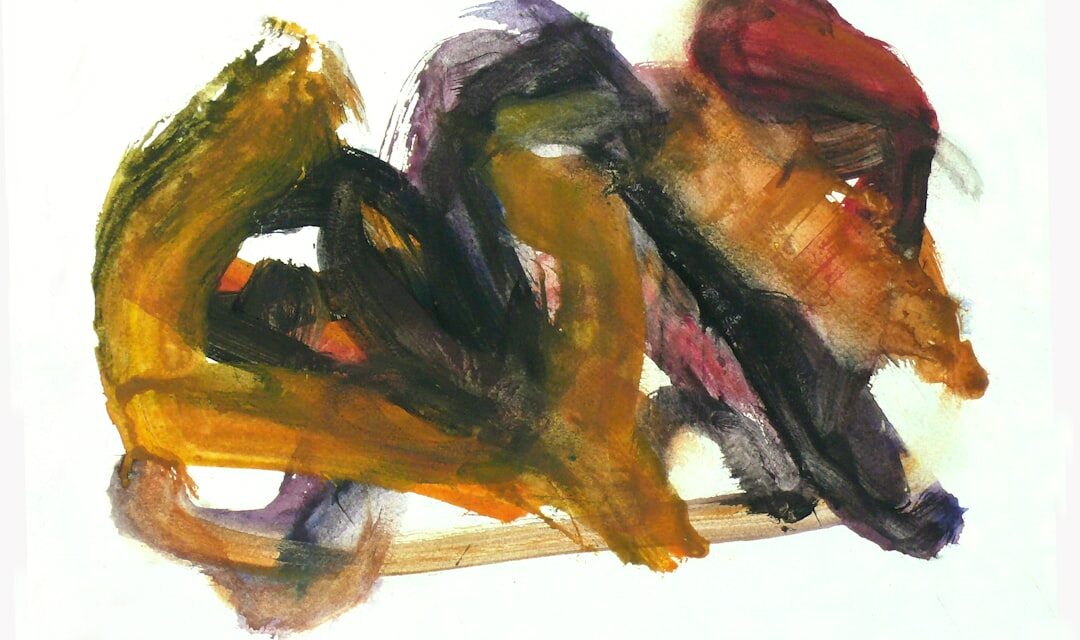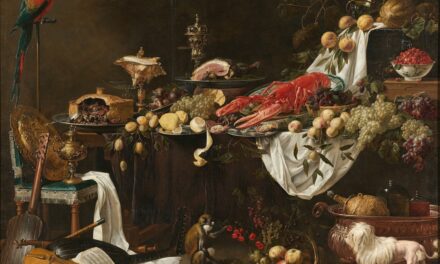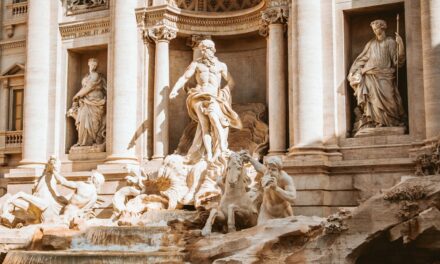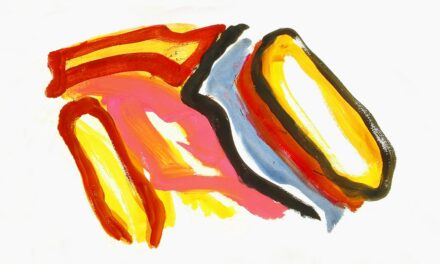Wassily Kandinsky was born on 4 December 1866 in Moscow, Russia. He was raised in an affluent family and exhibited an early inclination towards art and music. His parents supported his artistic endeavours, and he commenced drawing lessons at a young age.
Kandinsky’s initial education centred on the study of law and economics, and he subsequently attended the University of Moscow, where he obtained his degree in these subjects. Despite his formal education, his passion for art remained steadfast, and upon completing his studies, he opted to pursue a career as an artist. In 1896, Kandinsky relocated to Munich, Germany, to study art at the Academy of Fine Arts.
Initially drawn to traditional painting styles, his time in Munich exposed him to novel artistic movements and concepts that would significantly influence his work. Kandinsky’s early years in Munich were characterised by experimentation and a quest to develop his unique artistic voice. He was profoundly influenced by the works of the Impressionists and Post-Impressionists, as well as the Symbolist movement.
These early influences would shape Kandinsky’s artistic style and lay the foundation for his subsequent pioneering work in abstract art.
Summary
- Kandinsky was born in Moscow in 1866 and studied law and economics before pursuing art.
- He was influenced by the Impressionist and Post-Impressionist movements, as well as folk art and Russian icons.
- Kandinsky co-founded the Blue Rider group, which aimed to express spiritual truths through art.
- During his time at the Bauhaus, Kandinsky developed his abstract style and focused on the relationship between form and colour.
- Kandinsky believed that art had the power to evoke spiritual emotions and that abstract art could communicate universal truths.
Artistic Influences and Style
Influences of Impressionism and Symbolism
Kandinsky was also influenced by the Symbolist movement, which emphasised the use of symbols and imagery to convey emotional and spiritual themes. These influences can be seen in Kandinsky’s early works, which often featured dreamlike landscapes and mystical imagery.
The Development of Abstract Art
As Kandinsky continued to develop as an artist, he became increasingly interested in the idea of non-representational art. He began to experiment with abstract forms and colours, seeking to create art that could convey emotional and spiritual truths without relying on realistic depictions of the physical world.
A Pioneer of Abstract Art
This marked a significant departure from traditional artistic conventions and set Kandinsky apart as a pioneer of abstract art. His use of bold colours, dynamic shapes, and expressive brushwork became hallmarks of his style, and he would go on to become one of the leading figures of the abstract art movement.
The Blue Rider Group

In 1911, Kandinsky co-founded the Blue Rider group with fellow artist Franz Marc. The group was a loose association of artists who shared a common interest in exploring new forms of artistic expression. The Blue Rider group was deeply influenced by the ideas of theosophy and sought to create art that could convey spiritual truths and inner experiences.
Kandinsky’s work with the Blue Rider group marked a significant turning point in his career, as he began to fully embrace abstraction as a means of expressing his spiritual beliefs. The Blue Rider group was also instrumental in promoting the work of other avant-garde artists, and they organised several exhibitions that showcased the latest developments in modern art. The group’s manifesto, written by Kandinsky, outlined their commitment to exploring new artistic possibilities and breaking free from traditional artistic conventions.
The Blue Rider group’s influence extended beyond the visual arts, as they also sought to integrate music, literature, and theatre into their artistic vision. Their collaborative and interdisciplinary approach to art would have a lasting impact on the development of modern art.
The Bauhaus Period
In 1922, Kandinsky was invited to join the faculty of the Bauhaus school in Weimar, Germany. The Bauhaus was a revolutionary institution that sought to integrate art, craft, and design into a unified creative practice. Kandinsky’s time at the Bauhaus marked a new phase in his career, as he became deeply involved in teaching and developing his theories on art and spirituality.
He taught classes on colour theory and abstract painting, and his influence on the students at the Bauhaus was profound. During his time at the Bauhaus, Kandinsky continued to push the boundaries of abstract art, experimenting with new techniques and approaches to painting. He also published several influential books on art theory, including “Concerning the Spiritual in Art” and “Point and Line to Plane”, which outlined his ideas on the relationship between art and spirituality.
Kandinsky’s time at the Bauhaus was cut short by the rise of the Nazi regime in Germany, which led to the closure of the school in 1933. However, his impact on the students and faculty at the Bauhaus would continue to resonate in the world of modern art.
Kandinsky’s Theories on Art and Spirituality
Kandinsky’s theories on art and spirituality were central to his artistic practice and had a profound impact on the development of modern art. He believed that art had the power to convey spiritual truths and inner experiences that could not be expressed through realistic depictions of the physical world. Kandinsky saw colour as a powerful tool for conveying emotion and spiritual meaning, and he developed a complex system for understanding the psychological effects of different colours.
In his writings, Kandinsky argued that abstract art had the potential to transcend cultural and linguistic barriers, speaking directly to the universal human experience. He believed that through abstraction, artists could tap into a deeper level of consciousness and create art that resonated with viewers on a spiritual level. Kandinsky’s theories on art and spirituality continue to be studied and debated by scholars and artists to this day, as they offer a unique perspective on the power of art to transcend the material world and connect with something greater than ourselves.
Later Life and Legacy

Legacy as a Pioneer of Abstract Art
Kandinsky’s legacy as a pioneer of abstract art is undeniable, as his work laid the groundwork for countless artists who would follow in his footsteps.
Influence on Modern Art Movements
Kandinsky’s impact on modern art can be seen in the development of abstract expressionism, minimalism, and other avant-garde movements that emerged in the 20th century. His theories on art and spirituality have also had a lasting influence on artists who seek to create work that transcends traditional artistic boundaries.
Enduring Legacy
Kandinsky’s legacy continues to be celebrated through exhibitions of his work and scholarly research into his theories on art, ensuring that his contributions to modern art will be remembered for generations to come.
Kandinsky’s Impact on Modern Art
Kandinsky’s impact on modern art cannot be overstated. His pioneering work in abstract art laid the groundwork for a new way of thinking about artistic expression, one that prioritised emotion, spirituality, and individual experience over traditional representational forms. His bold use of colour, dynamic compositions, and expressive brushwork continue to inspire artists working in a wide range of mediums.
Kandinsky’s theories on art have also had a profound impact on the way we understand the relationship between creativity and spirituality. His belief in the power of art to transcend cultural barriers and speak directly to universal human experiences has influenced generations of artists who seek to create work that resonates on a deeper level. Kandinsky’s legacy as a visionary artist and thinker continues to shape the way we think about modern art, ensuring that his contributions will be remembered for years to come.
In conclusion, Wassily Kandinsky’s life and work have had a lasting impact on the world of modern art. His early influences, artistic style, involvement with the Blue Rider group, time at the Bauhaus school, theories on art and spirituality, later life, and legacy all contribute to his status as a pioneering figure in abstract art. Kandinsky’s impact on modern art continues to be felt today through his groundbreaking work and enduring influence on artists around the world.
If you are interested in learning more about the different art movements that emerged in the 20th century, you may want to check out an article on Thinkofart.com about Cubism. This artistic movement, which was pioneered by Pablo Picasso and Georges Braque, revolutionised the way artists depicted the world around them. The article provides a comprehensive overview of the key characteristics of Cubism and its impact on the art world. It’s a fascinating read that will deepen your understanding of modern art. https://thinkofart.com/cubism/
FAQs
Who was Wassily Kandinsky?
Wassily Kandinsky was a Russian painter and art theorist, credited as one of the pioneers of abstract art. He is known for his use of vibrant colors and geometric shapes in his paintings.
When was Wassily Kandinsky born?
Wassily Kandinsky was born on December 16, 1866, in Moscow, Russia.
What is Wassily Kandinsky known for?
Wassily Kandinsky is known for being one of the first artists to create purely abstract paintings. He believed that art should express the artist’s inner emotions and spiritual essence, rather than simply represent the physical world.
What art movement was Wassily Kandinsky associated with?
Wassily Kandinsky was associated with the Expressionist and Abstract art movements. He was a founding member of the Blue Rider group and the Bauhaus school of art and design.
What influenced Wassily Kandinsky’s art?
Wassily Kandinsky’s art was influenced by music, spirituality, and theosophy. He believed that colors and shapes could evoke emotions and spiritual experiences, much like music does.
What are some famous works by Wassily Kandinsky?
Some of Wassily Kandinsky’s famous works include “Composition VII,” “Yellow-Red-Blue,” and “Improvisation 28 (Second Version).” These paintings are known for their bold use of color and abstract forms.
Where can I see Wassily Kandinsky’s art?
Wassily Kandinsky’s art can be found in museums and galleries around the world, including the Solomon R. Guggenheim Museum in New York, the Centre Pompidou in Paris, and the State Tretyakov Gallery in Moscow.




